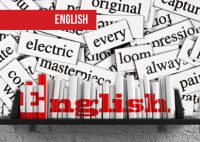Comprehension For SBI PO set – 8

Comprehension set – 8
PASSAGE 2
In a disarmingly frank talk at the Indian Merchants Chamber in Mumbai, the Japanese Ambassador in India dwelt at length on issues that exercise the minds of Japanese investors when they consider investment proposals in India. Raising the question “What comparative advantages does India offer as an investment market?”, he said though labour in India is inexpensive, wage levels are offset by productivity level to a large extent. Acknowledging that the vastness of the Indian market is a great inducement for investment in manufacturing industry, he wondered if it was justifiable to provide that overseas remittance of profit in foreign exchange be fully covered by exchange earnings as had been done. Significantly, on the eve of the Prime Minister’s visit to Japan, the government delinked profits repatriation from exports, meeting this demand. The Ambassador said foreign investors needed to be assured of the continuity and consistency of the liberalisation policy and the fact that new measures had been put into force by means of administrative notifications without amending government laws acted as a damper. The Ambassador pleaded for speedy formulation of the exit policy and pointed to the highly restrictive control by the government on disinvestment by foreign partners in joint ventures in India. While it is all too easy to dismiss critical comment on conditions in India contemptuously, there can be little doubt that if foreign investment is to be wooed assiduously, we will have to meet exacting international standards and cater at least partially to what we may consider the idiosyncrasies of our foreign collaborators. The Japanese too have passed through a stage in the fifties when their products were derided as sub-standard and shoddy. That they have come out of that ordeal of fire to emerge as an economic superpower speakes as much of their doggedness to pursue goals against all odds as of their ability to improvise and adapt to internationally acceptable standards. There is no gainsaying that the past record Japanese investment is a poor benchmark for future expectations.
1. The author has appreciated the Japanese for their
(a) quality of products manufactured in the fifties.
(b) passing through an ordeal.
(c) perseverance in raising quality of products.
(d) future expectations.
(e) None of these
2. According to the Japanese Ambassador, which of the following motivates the foreign investors to invest in Indian manufacturing industry?
(a) very large scope of Indian market
(b) overseas remittance of profit in foreign exchange
(c) assurance of continuity of the liberalization policy
(d) high productivity levels
(e) None of these
3. The purpose of the author in writing this passage seems to be to
(a) discourage foreign investment in India.
(b) critically examine Indian investment environment.
(c) paint a rosy picture of India’s trade and commerce.
(d) criticize government’s liberalization policy.
(e) raise the expectations of foreign investors.
4. Which of the following suggestions were expected by the Japanese Ambassador?
(A) speedy formulation of the exit policy
(B) imposing restrictions of disinvestment by foreign partners in joint ventures in India
(C) continuity and consistency of the liberalization policy
(a) All the three (b) A and B only
(c) B and C only (d) A and C only
(e) None of these
5. According to the Japanese Ambassador, India offers a comparative advantage to foreign investors in terms of
(a) inexpensive labour
(b) abysmally low wage levels
(c) higher productivity
(d) skilled workforce
(e) None of these
6. For seeking more and more foreign investment, the author suggests that we should
(a) satisfy fully the whims of our foreign collaborators.
(b) dismiss all critical comments on Indian conditions.
(c) link profit repatriations to exports.
(d) raise the quality of product to match international standards.
(e) None of these
7. From the passage it can be inferred that the author is
(a) a political commentator.
(b) a secretary of the Japanese Ambassador.
(c) a Japanese investor.
(d) an Indian investor.
(e) None of these
8. The author attributes Japan’s emergence as an economic superpower to
(A) their ability to overcome any ordeal.
(B) their tenacity and perseverance despite unfavourable circumstances.
(C) their ability to improvise and adapt to globally acceptable quality levels.
(a) A and B only
(b) B and C only
(c) A and C only
(d) All the three
(e) None of these
9. Which of the following statement(s) is/are true about the critical comments on investment conditions in India?
(A) These comments are difficult to be countered.
(B) These comments are received from various international quarters.
(C) These comments are based more on biases than on facts.
(a) Only C
(b) Only B
(c) Only A
(d) A and B only
(e) A and C only
Directions (Q. 10-12): Choose the word which is most SAME in meaning to the word printed in bold as used in the passage.
10. ASSIDUOSLY
(a) persistently
(b) hastly
(c) feebly
(d) deliberately
(e) innocently
11. IDIOSYNCRASIES
(a) demands
(b) needs
(c) deviations
(d) ideologies
(e) identity
12. SHODDY
(a) extraordinary
(b) shabby
(c) cheap
(d) disadvantageous
(e) unprofitable
Directions (Q. 13-15): Choose the word which is most OPPOSITE in meaning of the word printed in bold as used in the passage.
13. INDUCEMENT
(a) incentive
(b) motive
(c) breach
(d) temptation
(e) impediment
14. JUSTIFIABLE
(a) unreasonable
(b) formidable
(c) irrecoverable
(d) unscrupulous
(e) inevitable
15. CONTEMPTUOUSLY
(a) amicably
(b) reasonably
(c) respectfully
(d) methodically
(e) indecisively
Answer key:
1. (c) 2. (a) 3. (b) 4. (a) 5. (e) 6. (d) 7. (a) 8. (d) 9. (b) 10. (d) 11. (d) 12. (c) 13. (e) 14. (d) 15. (c)



